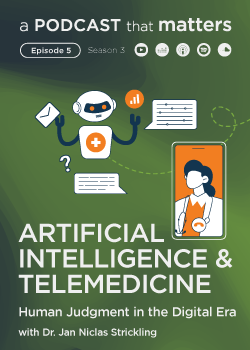Print

Copernicus for Urban Resilience in Europe - CURE
Details
Locations:Austria, Belgium, Czech Republic, Denmark, Germany, Greece, Spain, Switzerland, UK
Start Date:Jan 1, 2020
End Date:Dec 31, 2022
Contract value: EUR 2,805,012
Sectors: ICT & Telecommunications, Urban Development & Housing
Description
Programme(s): H2020-EU.2.1.6.3. - Enabling exploitation of space data
Topic(s): LC-SPACE-04-EO-2019 - Copernicus evolution – Research activities in support of cross-cutting applications between Copernicus services
Call for proposal: H2020-SPACE-2019
Funding Scheme: RIA - Research and Innovation action
Grant agreement ID: 870337
Project description
Urban resilience for Europe
The H2020-Space project CURE is a joint effort of 10 partners from 9 countries that synergistically exploits the 4 Copernicus Core Services to develop an umbrella application for urban resilience, consisting of individual cross-cutting applications for climate change adaptation/mitigation, energy and economy, as well as healthy cities and social environments, at several European cities. These cross-cutting applications cope with the required scale and granularity by also integrating or exploiting third-party data, in-situ observations and modeling. CURE uses DIAS (Data and Information Access Services) to develop a system capable of supporting operational applications and downstream services across Europe. The CURE system hosts the developed cross-cutting applications, enabling its incorporation into operational services in the future. CURE is expected to increase the value of Copernicus Core Services for future emerging applications in the domain of urban resilience, exploiting also the improved data quality, coverage and revisit times of the future satellite missions. Thus, CURE will lead to more efficient routine urban planning activities with obvious socioeconomic impact, as well as to more efficient resilience planning activities related to climate change mitigation and adaptation, resulting in improved thermal comfort and air quality, as well as in enhanced energy efficiency. Specific CURE outcomes could be integrated into the operational Copernicus service portfolio. The added value and benefit expected to emerge from CURE is related to transformed urban governance and quality of life, because it is expected to provide improved and integrated information to city administrators, hence effectively supporting strategies for resilience planning at local and city scales, towards the implementation of the Sustainable Development Goals and the New Urban Agenda for Europe. More information at: http://cure-copernicus.eu
Objective:
Resilience has become an important necessity for cities, particularly in the face of climate change. Mitigation and adaptation actions that enhance the resilience of cities need to be based on a sound understanding and quanti cation of the drivers of urban transformation and settlement structures, human and urban vulnerability, and of local and global climate change. Copernicus, as the means for the establishment of a European capacity for Earth Observation (EO), is based on continuously evolving Core Services. A major challenge for the EO community is the innovative exploitation of the Copernicus products in dealing with urban sustainability towards increasing urban resilience. Due to the multidimensional nature of urban resilience, to meet this challenge, information from more than one Copernicus Core Services, namely the Land Monitoring Service (CLMS), the Atmosphere Monitoring Service (CAMS), the Climate Change Service (C3S) and the Emergency Management Service (EMS), is needed. Furthermore, to address urban resilience, the urban planning community needs spatially disaggregated environmental information at local (neighbourhood) and city scales. Such information, for all parameters needed, is not yet directly available from the Copernicus Core Services mentioned above, while several elements - data and products - from contemporary satellite missions consist valuable tools for retrieving urban environmental parameters at local scale.
The H2020-Space project CURE (Copernicus for Urban Resilience in Europe) is a joint effort of 10 partners from 9 countries that synergistically exploits the above Copernicus Core Services to develop an umbrella cross-cutting application for urban resilience, consisting of individual cross-cutting applications for climate change adaptation/mitigation, energy and economy, as well as healthy cities and social environments, at several European cities. These cross-cutting applications cope with the required scale and granularity by also integrating or exploiting third-party data, in-situ observations and modelling. CURE uses DIAS (Data and Information Access Services) to develop a system capable of supporting operational applications and downstream services across Europe. The CURE system hosts the developed cross-cutting applications, enabling its incorporation into operational services in the future.
CURE is expected to increase the value of Copernicus Core Services for future emerging applications in the domain of urban resilience, exploiting also the improved data quality, coverage and revisit times of the future satellite missions. Thus, CURE will lead to more efficient routine urban planning activities with obvious socioeconomic impact, as well as to more efficient resilience planning activities related to climate change mitigation and adaptation, resulting in improved thermal comfort and air quality, as well as in enhanced energy efficiency. The CURE impact is maximized by developing synergies with EuroGEOSS and Climate-KIC, as well as by exploring the conditions under which, specific CURE outcomes could be integrated into the operational Copernicus service portfolio. The added value and benefit expected to emerge from CURE is related to transformed urban governance and quality of life, because it is expected to provide improved and integrated information to city administrators, hence effectively supporting strategies for resilience planning at local and city scales, towards the implementation of the Sustainable Development Goals and the New Urban Agenda for Europe.


